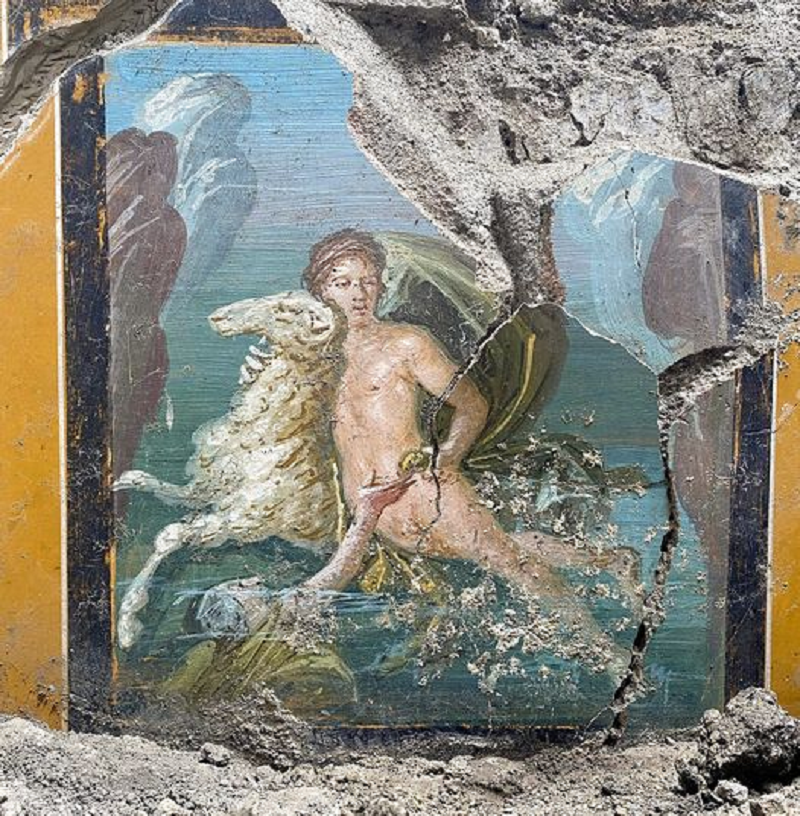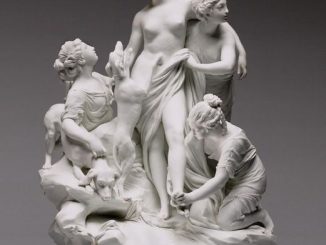Pompeii, a city frozen in time by the eruption of Mount Vesuvius in 79 AD, continues to reveal its secrets even millennia later. Recently, archaeologists made an astonishing discovery—a fresco depicting the ancient Greek myth of Phrixus and the Golden Fleece. This captivating artwork transports us back to the realm of Greek mythology, where heroes, gods, and fantastical creatures intertwine in epic tales. Let us embark on a journey to unravel the significance of this newly uncovered fresco and delve into the rich tapestry of myth and history it represents.

The fresco, found in a villa in Pompeii, portrays a pivotal moment in the mythological narrative of Phrixus and his sister Helle. According to legend, their stepmother, Ino, sought to eliminate them to secure her own children’s inheritance. In a desperate bid to escape, the divine ram with a golden fleece, sent by the gods, swoops down to rescue the siblings. However, tragedy strikes as Helle loses her grip and falls into the sea below, which would later be named the Hellespont in her honor.
The fresco captures this poignant moment with remarkable detail and symbolism. Phrixus clings to the ram’s back, his expression a mix of relief and sorrow as he witnesses his sister’s fate. The ram itself is depicted with majestic wings, evoking its divine nature and its role as the savior of Phrixus. Meanwhile, Helle is shown sinking into the depths of the sea, her figure surrounded by swirling waves—a poignant reminder of the perils of mortal existence.
The significance of the Golden Fleece cannot be overstated. In Greek mythology, it symbolizes power, prosperity, and the pursuit of greatness. It was this legendary artifact that later spurred Jason and the Argonauts on their epic quest. The fresco serves as a visual reminder of the enduring allure of this mythical treasure and the heroic deeds it inspired.
Moreover, the discovery of this fresco sheds light on the cultural connections between Pompeii and the wider Mediterranean world. The presence of Greek myths and motifs in Pompeiian art underscores the city’s role as a vibrant hub of trade and cultural exchange. It is a testament to the enduring legacy of Greek civilization and its influence on the Roman world.
As we marvel at the beauty and intricacy of this newly uncovered fresco, we are reminded of the timeless power of storytelling. Myth and history intertwine, blurring the lines between fact and fiction, and inviting us to explore the depths of the human imagination. In the ruins of Pompeii, the past comes alive, offering us a glimpse into a world rich with wonder and mystery.
The discovery of the fresco depicting Phrixus and the Golden Fleece in Pompeii is a testament to the enduring fascination with Greek mythology and its impact on ancient cultures. It invites us to ponder the timeless themes of heroism, tragedy, and the quest for greatness that resonate across generations. As we continue to uncover the secrets of the past, let us embrace the stories that bind us together and celebrate the enduring legacy of myth and history.


